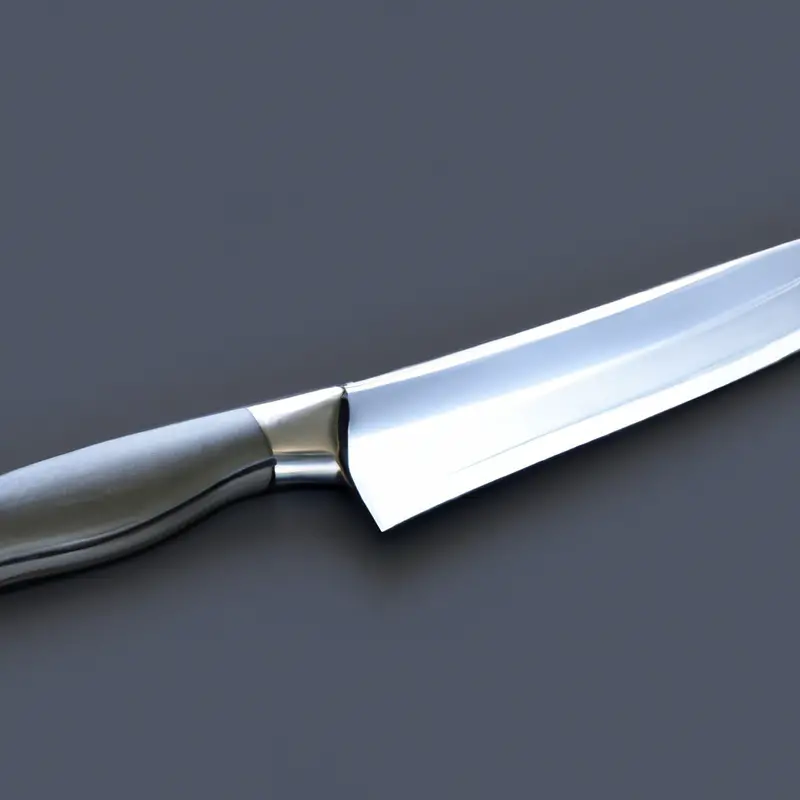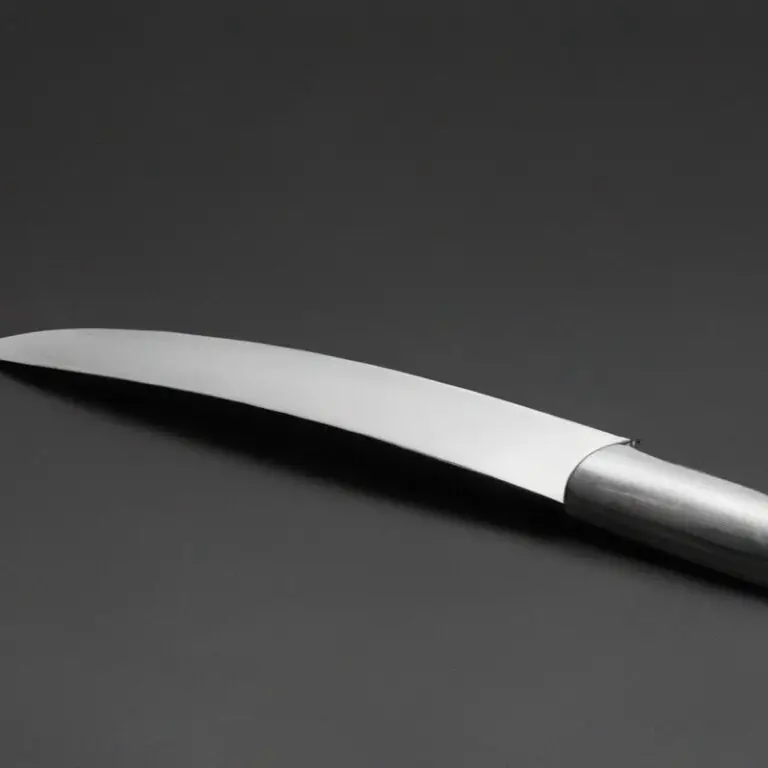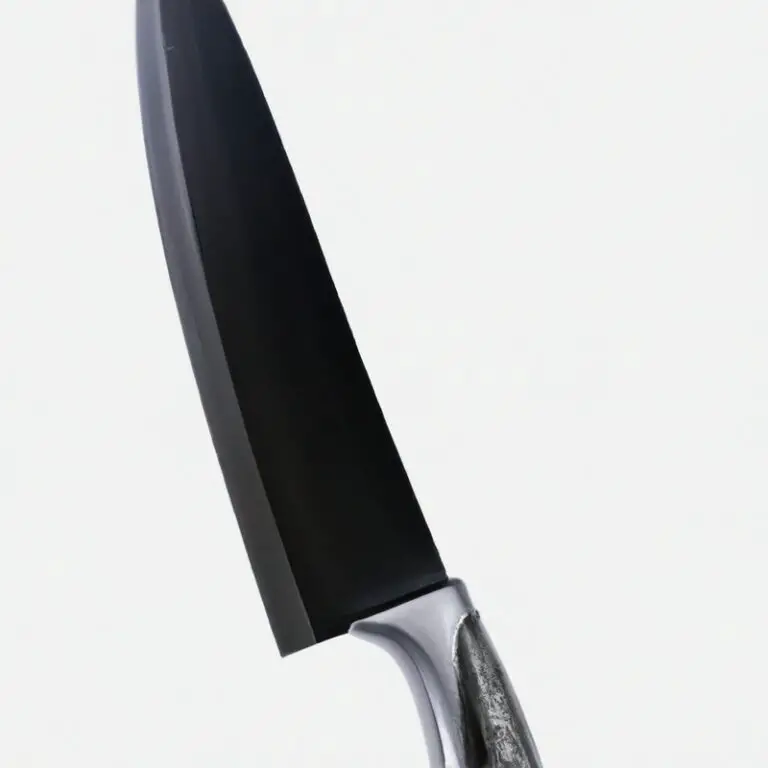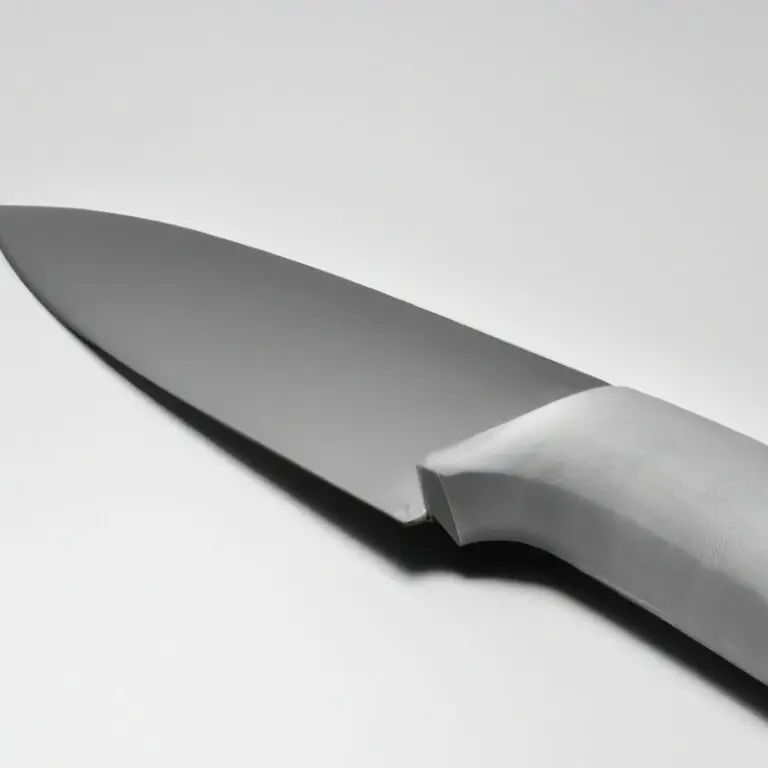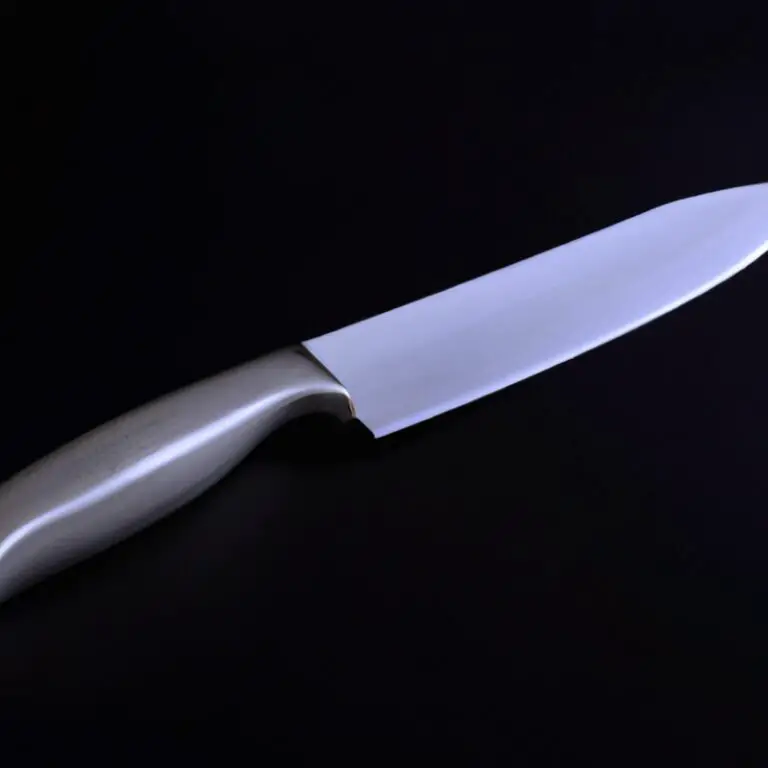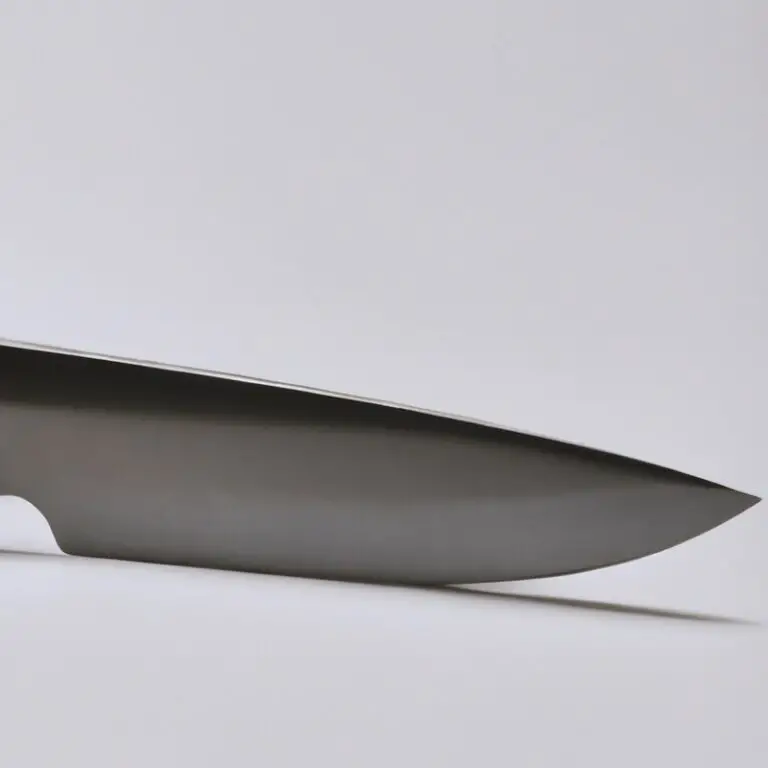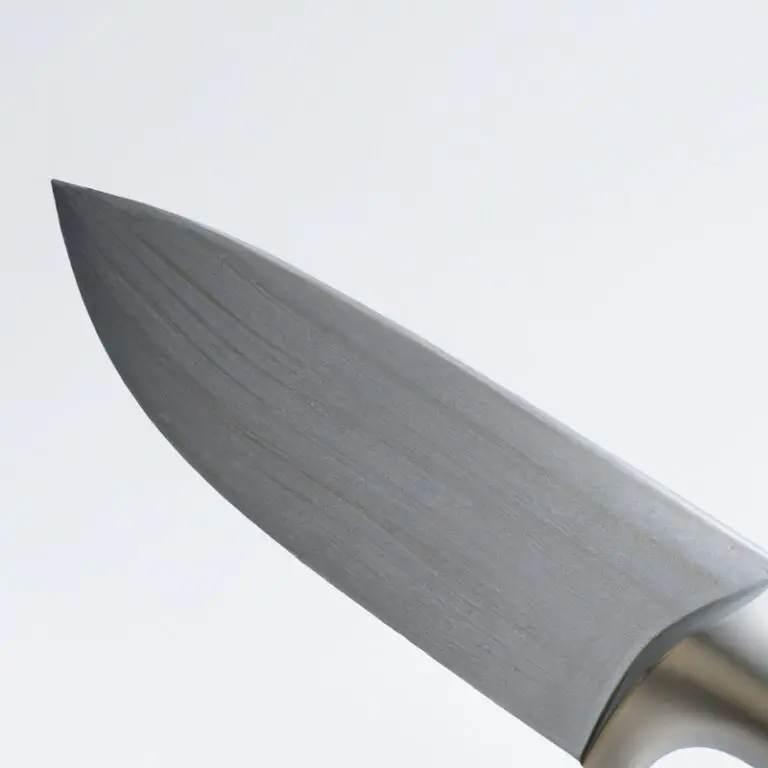How To Prevent Food From Sticking To The Blade Of a Santoku Knife? Try This!
Key Takeaways:
- A wet blade and a dry food surface can prevent food from sticking to a Santoku knife.
- Coating the blade with oil or non-stick spray can also prevent food from sticking to the knife.
- Cutting your food with a gentle back-and-forth motion can reduce the chance of food sticking to the knife.
- Regular maintenance of your Santoku knife, including sharpening and honing, can also prevent food from sticking to the blade.
Are you tired of struggling with food sticking to the blade of your Santoku knife? As a culinary expert, I understand the importance of ensuring a clean and efficient cut while preparing meals.
In this article, I’ll share some tried-and-true techniques and tips to prevent food from sticking to your Santoku knife.
From using a rocking motion and adjusting the angle of your knife to utilizing non-stick spray and maintaining a sharp blade, you’ll learn how to prepare delicious meals with ease. So, let’s dive in and make cooking a joy again.
| S. No. | Tips |
|---|---|
| 1. | Wet the blade before cutting |
| 2. | Use a non-stick cooking spray |
| 3. | Coat the food with flour or oil |
| 4. | Slice slowly and gently |
| 5. | Clean the blade after each use |
The importance of maintaining a sharp Santoku knife to prevent food from sticking
Maintaining a sharp Santoku knife is essential in preventing food from sticking to the blade. A dull knife will require more force to cut through food, causing it to crush and smear.
The rough surface left on the blade collects food particles, making it more prone to sticking.
A sharp knife will make clean and precise cuts while reducing the surface area for food particles to cling to. Regular sharpening of the knife will maintain its sharpness, ensuring clean and effortless cutting.
A sharp Santoku knife will not only prevent food from sticking to the blade but also provide a safer and more enjoyable cooking experience.
Techniques for using a rocking motion with a Santoku knife to prevent food from sticking
One effective technique to prevent food from sticking to a Santoku knife is to use a rocking motion. The rocking motion involves gently moving the length of the knife back and forth while cutting, like a seesaw.
This helps create an even cut and allows the blade to glide smoothly and effortlessly through the food.
It also decreases the likelihood of food getting stuck to the blade by minimizing the amount of contact. To use the rocking motion technique, start by placing the tip of the blade on the cutting board and slowly raise the back end of the knife.
Then, gently rock the knife back and forth while applying light pressure to create a smooth and even cut.
It’s important to maintain a consistent angle throughout the rocking motion to prevent the blade from catching or jerking. Using the rocking motion technique with a Santoku knife can make food preparation easier, faster, and more efficient.
It’s ideal for chopping vegetables, fruits, and other ingredients that have a tendency to stick to the blade.
With practice and patience, anyone can master the art of using a rocking motion with a Santoku knife and prevent food from sticking.
How adjusting the angle of the Santoku knife can prevent food from sticking
Adjusting the angle of the Santoku knife while cutting can prevent food from sticking to the blade. The blade’s angle determines how much surface area of the blade is in contact with food.
When the angle is too shallow, the blade presses against the food, causing it to stick.
On the other hand, a steeper angle creates less surface contact, reducing the chances of food sticking. A 15 to 20-degree angle is the recommended range for slicing and dicing with a Santoku knife.
Maintaining a consistent angle while cutting can prevent the food from adhering to the blade.
Adjusting the angle may take time and practice, but it is useful in preventing frustration and food waste.
The benefits of using a non-stick spray or oil to prevent food from sticking to the Santoku knife
Using a non-stick spray or oil on a Santoku knife can make cutting through food a breeze. By adding a thin layer of non-stick spray or oil on the blade of the knife, it becomes easier to make precise cuts without worrying about the food sticking to the blade.
This not only saves time but also reduces the risk of damaging the knife while freeing it from the food.
Furthermore, using a non-stick spray or oil can make the cleaning process easier, as the oil helps to rinse away the food debris. However, it is essential to choose the right type of oil or spray that complements the sharpness of the Santoku knife to prevent any damage.
Thus, using a non-stick spray or oil on a Santoku knife ensures effortless and comfortable cutting, reduces risks, and makes cleaning a breeze.
How pressure and speed can affect the tendency of food to stick to a Santoku knife
The pressure and speed applied when cutting with a Santoku knife can significantly affect the tendency of food to stick to the blade. When using too much pressure while cutting, the blade can press flesh and oils out of the food, causing it to stick to the knife’s surface.
Similarly, cutting too slowly can also lead to sticking, especially with softer fruits and vegetables.
Therefore, it is essential to apply even pressure while cutting and maintain a consistent speed to prevent food from sticking to the knife. Additionally, using a smooth and sharp blade can help reduce the pressure needed to cut and minimize the chances of sticking.
Why using a wet cutting board can help prevent food from sticking to the Santoku knife
Using a wet cutting board is an effective way to prevent food from sticking to the blade of a Santoku knife. When the cutting board is dry, it can create static electricity that causes food particles to stick to the surface.
However, a wet cutting board reduces this static buildup, providing a smoother cutting experience.
Additionally, wet cutting boards tend to be less abrasive than dry ones, preventing excessive wear and tear on the blade of the knife. Overall, keeping a wet cutting board handy while cutting food with a Santoku knife can aid in preventing food from sticking to the blade.
The advantages of using a textured surface on the cutting board to prevent food from sticking to the knife
Using a cutting board with a textured surface provides several advantages when it comes to preventing food from sticking to the knife. The texture on the board creates a gap between the surface and the food, making it more difficult for the food to stick to the knife.
This surface can be created using various materials such as bamboo, wood, plastic or rubber, and is designed specifically to provide a grip on the food while cutting.
The texture on the board also means that you can use less force when cutting, minimising the chance of the knife slipping and causing an accident. Furthermore, a textured cutting board is also beneficial for the longevity of the knife’s blade.
When using a smooth surface, the knife’s blade comes in contact with the hard surface, causing friction, which can dull the blade over time.
However, with a textured surface, there is less direct contact, and the blade stays in good condition for a longer period. Thus, using a textured surface on the cutting board not only prevents food from sticking to the knife but also ensures the knife’s longevity, making it a worthy investment for anyone who frequently works with knives in the kitchen.
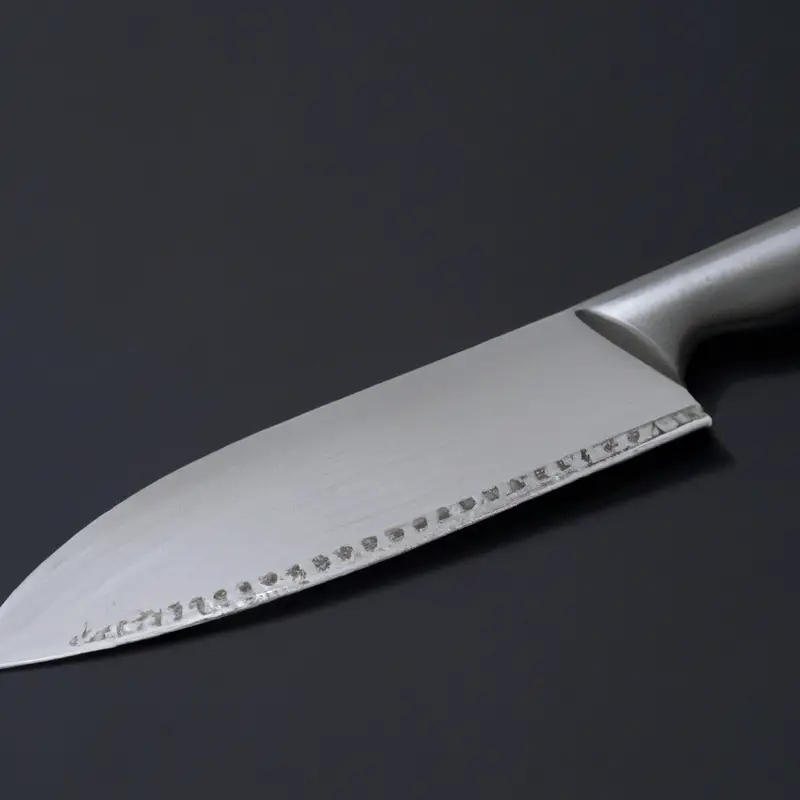
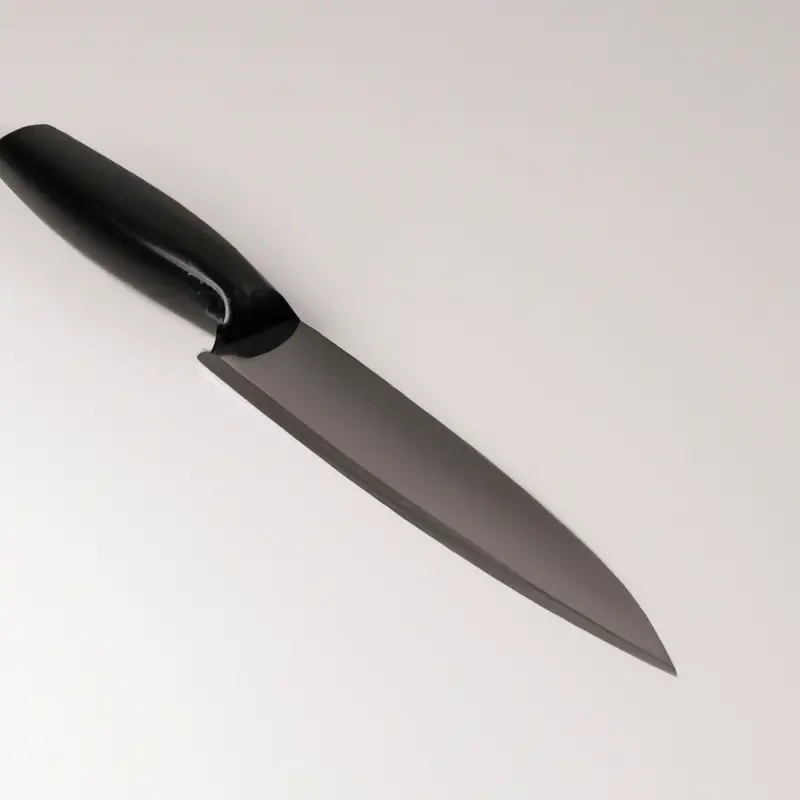
The impact of food temperature on the tendency to stick to the Santoku knife
The temperature of the food being cut can significantly impact the tendency of the Santoku knife to stick. Foods that are cold or partially frozen are more likely to stick to the blade of the knife.
On the other hand, warm or room temperature foods tend to slide off the blade with ease.
It is essential to allow your food to come to room temperature before cutting if it is cold or partially frozen. This allows the food’s natural oils and moisture to be released, reducing the tendency to stick to the knife.
Likewise, when cutting warm foods, it is essential to use a light touch to avoid squishing or flattening the food, which can result in it sticking to the blade.
How cleaning and drying the Santoku knife between cuts can prevent food from sticking
Cleaning and drying the Santoku knife between cuts is a crucial step to prevent food from sticking to the blade. When you use a knife to cut food, natural oils and juices from the ingredients get transferred to the blade.
If you don’t clean and dry the blade, these juices can cause food particles to stick, making it difficult to make precise cuts.
To clean your Santoku knife between cuts, simply wipe the blade with a clean cloth or towel after every use. If you’re cutting a lot of sticky ingredients, periodically rinse the blade with water and dry it immediately.
Drying your Santoku knife is equally important.
After cleaning, make sure the blade is completely dry before using it again. Dampness can cause corrosion, which can affect the blade’s sharpness.
By cleaning and drying the Santoku knife between cuts, you can maintain its sharpness and prevent food from sticking to the blade.
It also helps to ensure that you’re cutting clean, precise slices every time.
Other best practices for preventing food from sticking to the blade of a Santoku knife
In addition to the previously mentioned techniques, there are other best practices for preventing food from sticking to the blade of a Santoku knife. One such practice is using a slicing motion instead of a chopping motion when cutting food.
A chopping motion can cause the food to release its juices, making it more likely to stick to the knife blade.
Another effective way to prevent food from sticking is to apply a thin layer of cornstarch or flour to the food before cutting. This creates a barrier between the food and the blade, reducing the chances of sticking.
It’s also essential to use the correct cutting technique for each type of food.
For instance, slicing onions against the grain can help to prevent them from sticking to the blade. Similarly, using a back-and-forth sawing motion when cutting through crusty bread can prevent the bread from sticking to the blade.
Finally, sharpening the knife regularly and using a honing steel before each use can prevent the blade from becoming dull and damaged.
A dull blade is more likely to crush the food, increasing the chances of it sticking to the blade.
Final Verdict
Preventing food from sticking to the blade of a Santoku knife requires proper maintenance, technique, and consideration of various factors such as pressure, speed, and surface texture. By keeping your knife sharp and using a rocking motion at the correct angle, you can significantly reduce the likelihood of food sticking.
Additionally, using a non-stick spray or oil, a wet cutting board, or a textured surface can provide further assistance.
Remember to also consider the temperature of your food and to clean and dry your knife between cuts. By implementing these best practices, you can ensure a smooth and efficient cutting experience and enhance your culinary creations.
Trust in the reliability of this information and let your newly sharpened Santoku knife do the talking.

